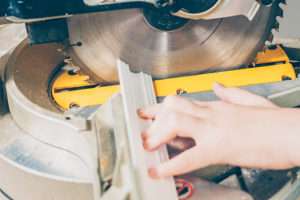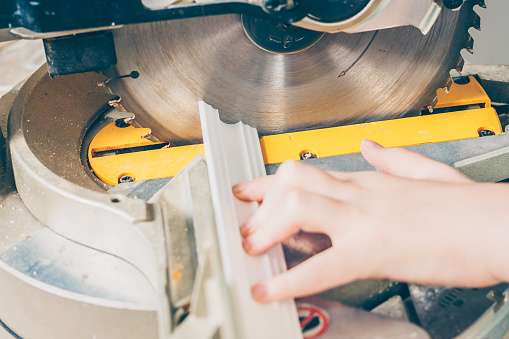This post may contain affiliate links which means I may receive a commission for purchases made through links.

Miter saws for crown molding allow users to place them at different angles based on the desired outcomes. As a result, you can use the tool to make various cuts including bevel and miter cuts. Interestingly, these cuts can be a little confusing for beginner woodworkers. However, that should not come as a surprise, seeing that both cuts are somehow similar and closely related.
All in all, it’s important to understand the differences between miter and bevel cuts before you start your first woodworking project. This will help you create beautiful projects and make it easy to read various woodworking plans. Besides, both miter and bevel cuts are used for different purposes. Hopefully, by the time you’re done reading this article, you’ll know how to distinguish between miter and bevel cuts!
What is a bevel cut?
A bevel angle is cut right at the thickness of the material instead of length & width at any angle apart from 90 deg. Simply put, it’s an angled cut that is relative to the material’s face. Moreover, the angle is usually measured against a square-edge cut.
Therefore, a bevel cut is angled horizontally on the plane of the work material. This allows the blade to tilt right or left from its 90 deg angle to the table surface, making a cut that moves through the board at an angle from top to bottom.
What is a miter cut?
On the other hand, a miter cut is also made at any other angle apart from 90 deg, but along the length and width of the workpiece instead of depth. In other words, it involves making other-than-square cuts on the face of the wood. A miter cut creates a triangle or visible angle shape.
The miter saw blade remains perfectly vertical to the base of the tool when making a miter cut. Therefore, you only need to change the cut’s angle from the front to the back of the workpiece. One of the most common miter cuts involves making 2 opposing 45 deg angles so that the material comes together to form a perfect 90 deg. This type of cut is commonly used when cutting pieces of crown molding for outside corners.
Notable Differences between Miter vs Bevel cuts
At first glance, you can’t tell the difference between both cuts, unless you take a closer look. The easiest way to distinguish a bevel cut from a miter cut is to identify where the cut was made on the workpiece.
With a miter cut, you’ll notice that the angled cut is on the face of both workpieces. More importantly, you can join these pieces to make a corner known as the miter joint. However, with a bevel cut, the angle cut is right along the end or edge of the workpiece.
Another way to distinguish between a miter and bevel cut is to look at how each cut is made. For instance, when making a bevel cut, you have to adjust the angle of the blade with respect to the top surface of the workpiece. Meanwhile, a miter cut is made by pressing the flat surface on the tabletop at an angle to the blade.
Applications of bevel vs miter cuts
Lastly, you can distinguish between the bevel and miter cuts, depending on how they’re used. As mentioned earlier, both miter and bevel cuts are commonly used for different applications. To start, miter cuts are commonly used for tasks like making picture frames, doors, seals, windows, crown moldings, etc. In comparison, bevel cuts have several uses in welding, crafting, and carpentry projects. For instance, bevel cuts are used to soften the edge of a workpiece for safety purposes and aesthetics, and joining pieces. In addition, they’re suitable for increasing the material’s resistance to weathering as well as creating geometrical shapes.
Another interesting thing about bevel cuts is that they produce a more appealing look due to the complementary angles they form. Plus, they slightly overlap each other to appear as if they’re one piece, thus giving a more unified appearance. This also makes them ideal for welding projects since they offer better joint support, allowing them to handle heavier loads.
The only challenge with bevel cuts is that they’re a bit difficult to create, especially if you are using hand tools. For that reason, it’s recommended that use power tools like miter saws for that type of work. However, if you still insist on using hand tools, make sure you use a protector to create accurate angles.
Final Word
Both dual and single miter saws can be used to miter and bevel cuts. However, miter vs bevel cuts are more different than most people think. More importantly, both cuts are used for different kinds of projects. Luckily, by looking for the differences I’ve mentioned above, you can easily identify which type of cut is which on your next project. Moreover, this will help you get the desired results when undertaking various projects like installing crown molding, chair railing, baseboards, and so on!
